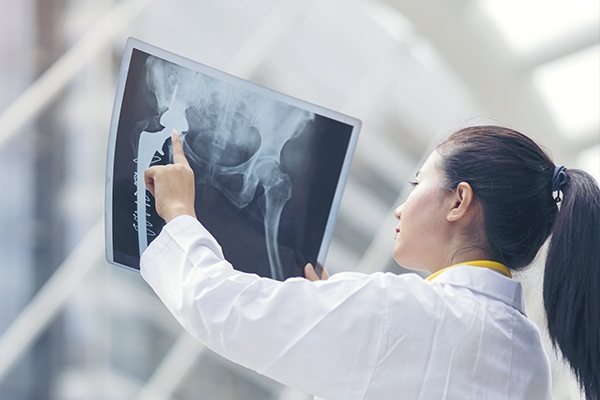Go Up And Up to Know More About Bone Cancer

Zach Sobiech is the composer and source of inspiration for "Clouds". This talented young man was diagnosed with bone cancer named bone cancer (osteosarcoma) when he was 14 years old. Four years later, in 2018, he passed away.
Bone cancer
Osteosarcoma is one of several types of bone cancer. Right. Bone cancer is diverse, depending on the type of cell and where the tumor cells grow.
This cancer can start anywhere, but commonly in the pelvic bone and long bones of the arms or legs. This is why bone cancer is named after the site where the abnormal cells begin to grow.
Because tumor cells in the bones can potentially develop into cancer, early detection is critical, especially if you feel a lump in a specific section of your body.
Bone cancer types
Bone cancer is classified into two types. When cancer cells form in bone or cartilage, this is referred to as primary bone cancer.
Secondary bone cancer is the other type. It is caused by cancer metastases from other parts of the body.
There are several types of bone cancer:
- Osteosarcoma. This type of bone cancer usually develops at the ends of long bones near joints, such as the knee (thigh or shin bone) or in the upper arm bone near the shoulder. Osteosarcoma can also develop in somewhere else, such as the waist or shoulders. This cancer most commonly attacks teenagers and affects the outer layer of hard bone tissue.
- Ewing's sarcoma. This is a type of primary bone cancer that starts in the soft tissue around or within the bones. Ewing's sarcoma often occurs in long bones, including the femur and upper arm bones, as well as the pelvis. This cancer is more prevalent in children and teenagers.
- Chondrosarcoma. This cancer appears in the cartilage tissue, which is the connective tissue between bones, usually in the pelvis, thigh bone, and shoulder bone. This cancer often grows slowly and primarily affects adults.
- Chordoma. This cancer develops at the base of the skull or along the spine. Chordomas tend to grow slowly but can become quite invasive.
The signs and symptoms of bone cancer

Symptoms of bone cancer include:
- Bone pain.
- Swelling in the long bones (legs, hips, or chest).
- Bones feel weak or ache after minor trauma (minor injury).
- Fatigue for no reason.
- Sudden weight loss.
- Decreased range of motion.
Not all types of bone cancer cause pain at first. Stay vigilant in this regard. Consult a doctor immediately if any of the above symptoms progress to the following stages:
- often repeated (come and go);
- the pain seems to be worsen at night;
- does not go away after pain medication is taken.
If your sibling, friend, or child complains of bone pain, don't ignore it. Take action as soon as possible to avoid a worse-case scenario.
Risk factors and causes
The exact cause of bone cancer is unknown. The following factors, however, are thought to contribute to abnormal bone growth:
Genetic factor. Bone cancer, like other cancers, can be caused by hereditary factors. Furthermore, the occurrence of genetic mutations raises the risk of bone cancer. Several syndromes, including Li-Fraumeni, Werner, and Rothmund-Thomson, have also been linked to an increased risk of osteosarcoma.
History of radiation therapy. People who have had radiation therapy (typically for another type of cancer) are somewhat more likely to develop bone cancer in the treated area. This risk is increased in persons who are treated at a young age (especially as children) and in those who get higher doses of radiation.
Development of other diseases. Paget disease, which disrupts bone regeneration, increases the risk of developing osteosarcoma. Benign tumors, such as enchondromas and osteochondromas, can progress to malignant chondrosarcomas.
Various bone exams

You may be subjected to a variety of tests at a medical facility. Among them are:
Radiology using X-rays. The area of the bone where the tumor or cancer cells have grown will have a rough and irregular appearance.
CT Scan Radiology. This is done to see if the cancer has spread to other organs like the lungs.
MRI Radiology. It is performed to determine whether bone cancer has spread to other tissues such as muscles, blood vessels, or nerves.
Radionuclide Bone Scan. Radioactive substances are used in this examination to determine how much bone damage the cancer has caused and whether the cancer has spread to other bones.
PET Scan. This test is used to detect abnormal cell activity. The spread of bone cancer cells into other tissues or organs can then be more easily assessed.
Biopsy. Obtaining cell or tissue samples for laboratory analysis.
Although rare (only 1% of all cancers), we must be aware of the possibility of bone cancer. Zach Sobiech's death from bone cancer at a young age exemplifies how terrible this disease is.
The bones are the hardest part of the body. But hard does not mean free of abnormalities. Take care of your bones because our time will not come again.
If you have any questions regarding bone cancer, click WhatsApp.



